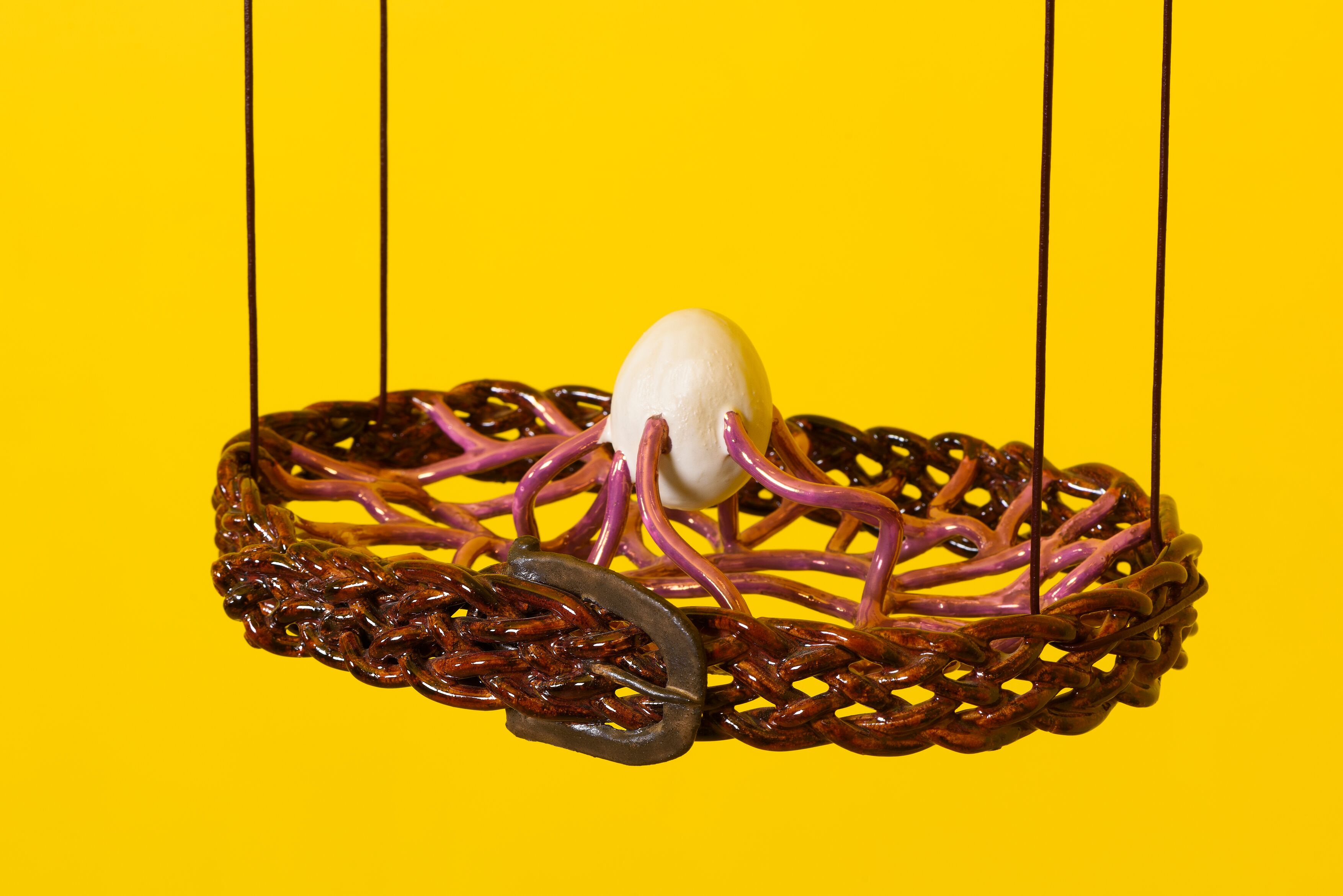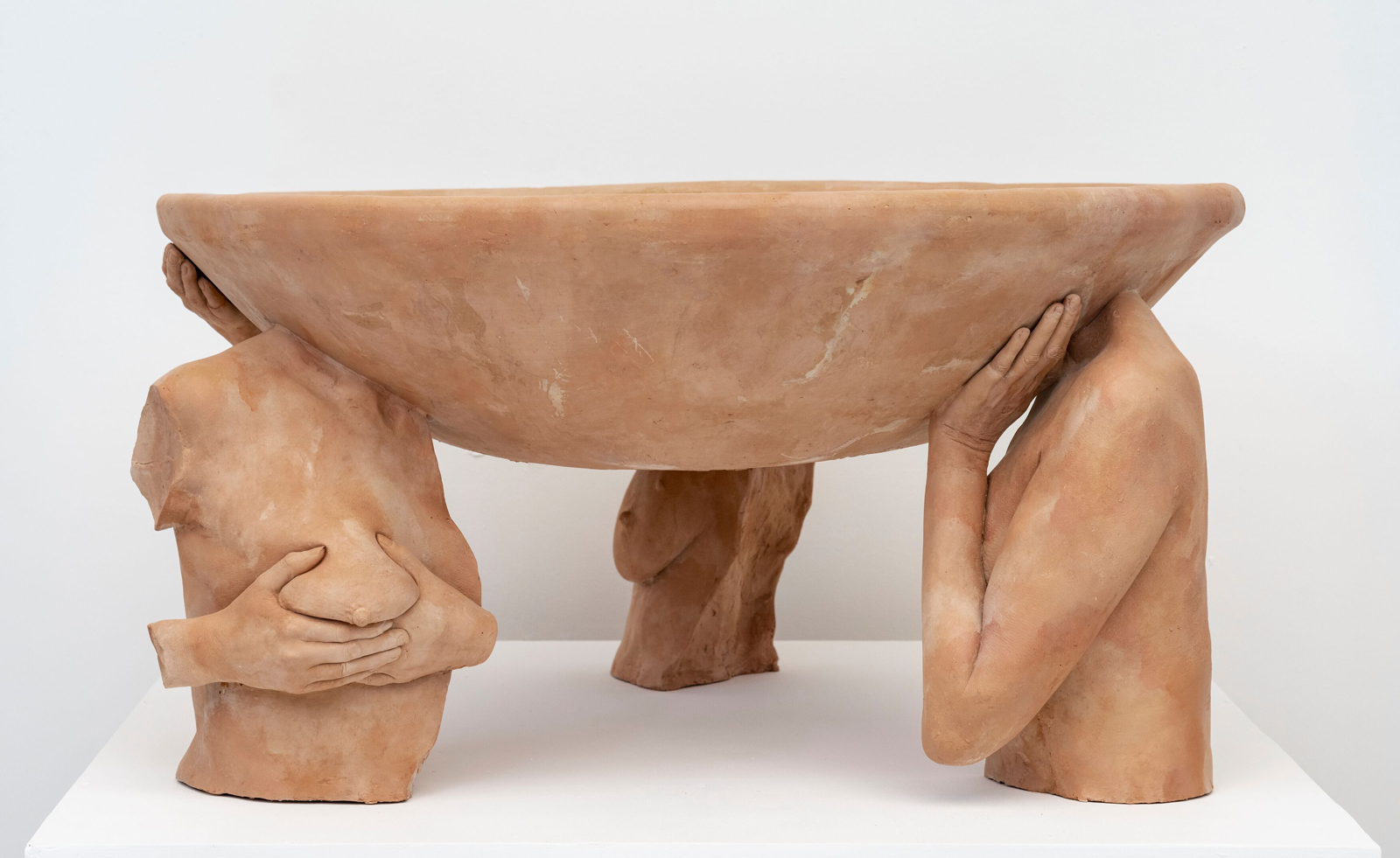
‘Present Tense’, the group show currently on at Hauser & Wirth Somerset (until 28 April 2024), is concerned with what’s happening in art right now. Its title tells you as much, as do the artists, whose work engages with the most pressing social issues facing the UK today – from biases around gender, race and sexuality to the corrosive effects of capitalism and technology, and individual loneliness.
But while the show is focused on the present, it also asks a specific question about the future. Namely, who will be the next big names in British art?
‘Present Tense’ at Hauser & Wirth Somerset: the UK’s next generation
For ‘Present Tense’, Hauser & Wirth has gone outside its roster to select 23 talents whom it believes to be ‘the next generation of artists living and working in the UK’. Most of these creatives are under 40 and are already considered some of the country’s most exciting emerging talents. Names like Gray Wielebinski, who had a solo show at ICA last year, and Shawanda Corbett, who recently showed at Tate Britain. Or George Rouy with his stop-in-your-tracks paintings of hazy, vibrating figures, and Ania Hobson with her moody and expressive figurative paintings.
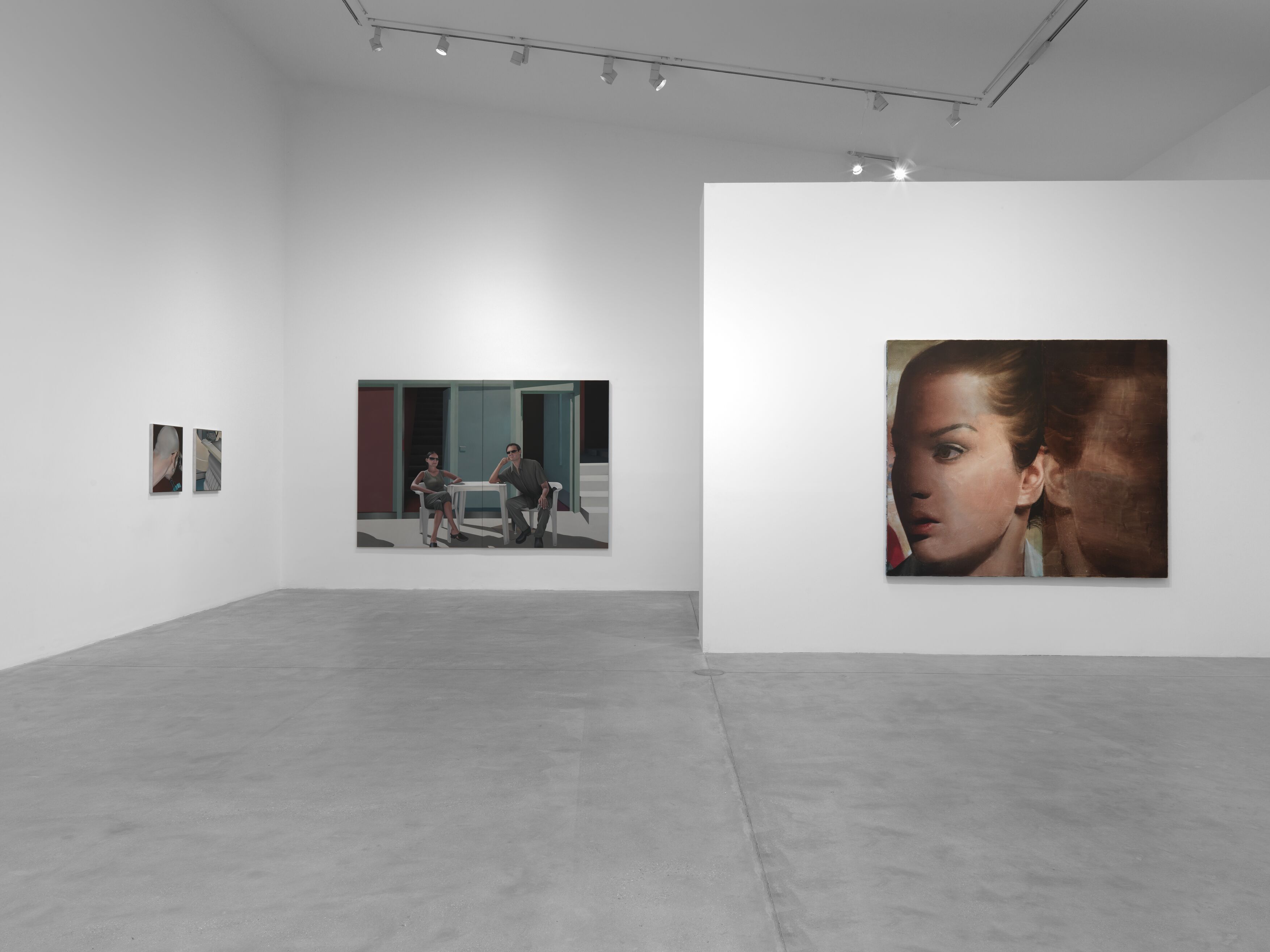
The show is a panoply of artists you have already heard of or, if you haven’t, you will be glad you learned about by the time you left. If the main draw of group shows is to see a diverse range of talent under one roof, then ‘Present Tense’ doesn’t disappoint. As the show’s curator, Isabella Bornholt, writes over email, the aim of the show was to offer a glimpse into what’s happening in UK art now, rather than a comprehensive overview.
‘The goal was not to find artists that define the next generation of UK art, instead we were hoping to champion and spotlight a range of exciting examples of the next generation of artists working in the UK today. The selection process was collaborative with the wider Hauser & Wirth team and additional gallerists we have partnered with. The exhibition developed into a far more dynamic and stimulating showcase than I could have ever anticipated, largely due to the passion and enthusiasm from all the artists, many of which created entirely new works for the show.’
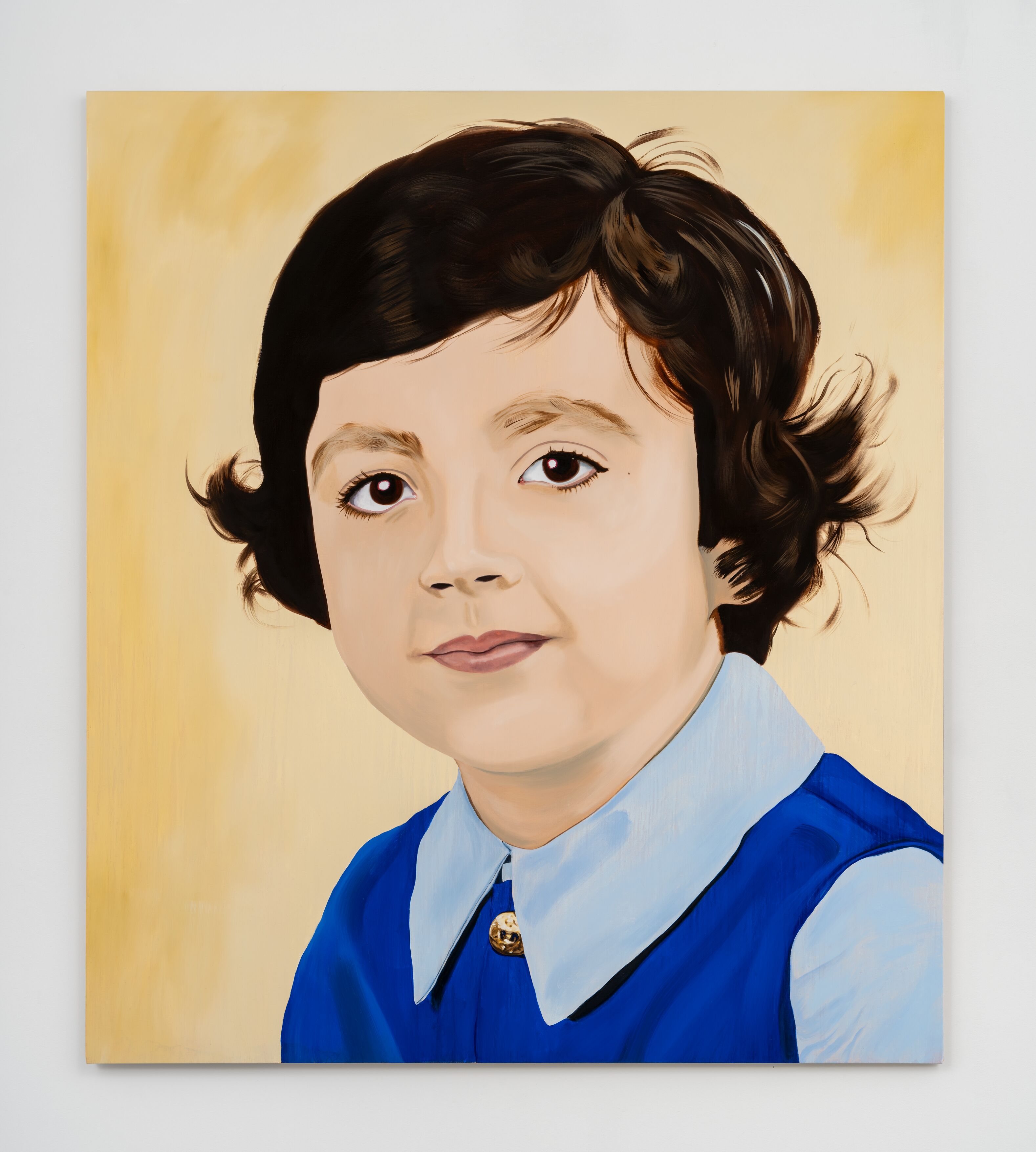
Of the many notable names there’s Ebun Sodipo, whose silver-backed collages are made for ‘Black-trans people of the future’, and Shaqúelle Whyte, who enlivens everyday scenes with his loosely rendered brushstokes and vibrant colour palette. Emanuel de Carvalho paints cinematic scenes in a steely colour palette. Meanwhile, Lydia Blakeley reinterprets the world she photographs on her phone into beachy-coloured paintings and sculptures that reveal the false promises of commercialism.
It is interesting to note that almost all of the artists in ‘Present Tense’ are painters or sculptors, with only one video work on display. In the exhibition notes, Hauser & Wirth comments that this prevalence of more traditional art forms reveals an increasing fascination among today’s artists with craft; and it’s not much of a stretch to see how our tech-saturated reality could create a new appreciation for the physicality of painting and sculptures.
If ‘Present Tense’ foreshadows what’s to come in the UK art scene, then we can expect to see more artwork that marries an engagement with conceptual ideas and a demonstration of technical prowess. And if that means more work from the likes of Ella Walker, who uses traditional fresco techniques to create unconventional representations of femininity, or Sang Woo Kim, who creates a ‘visual skin composed of nostalgia and recollections’ in his paintings as a way to understand his experience as a first-generation immigrant, then that’s good news.
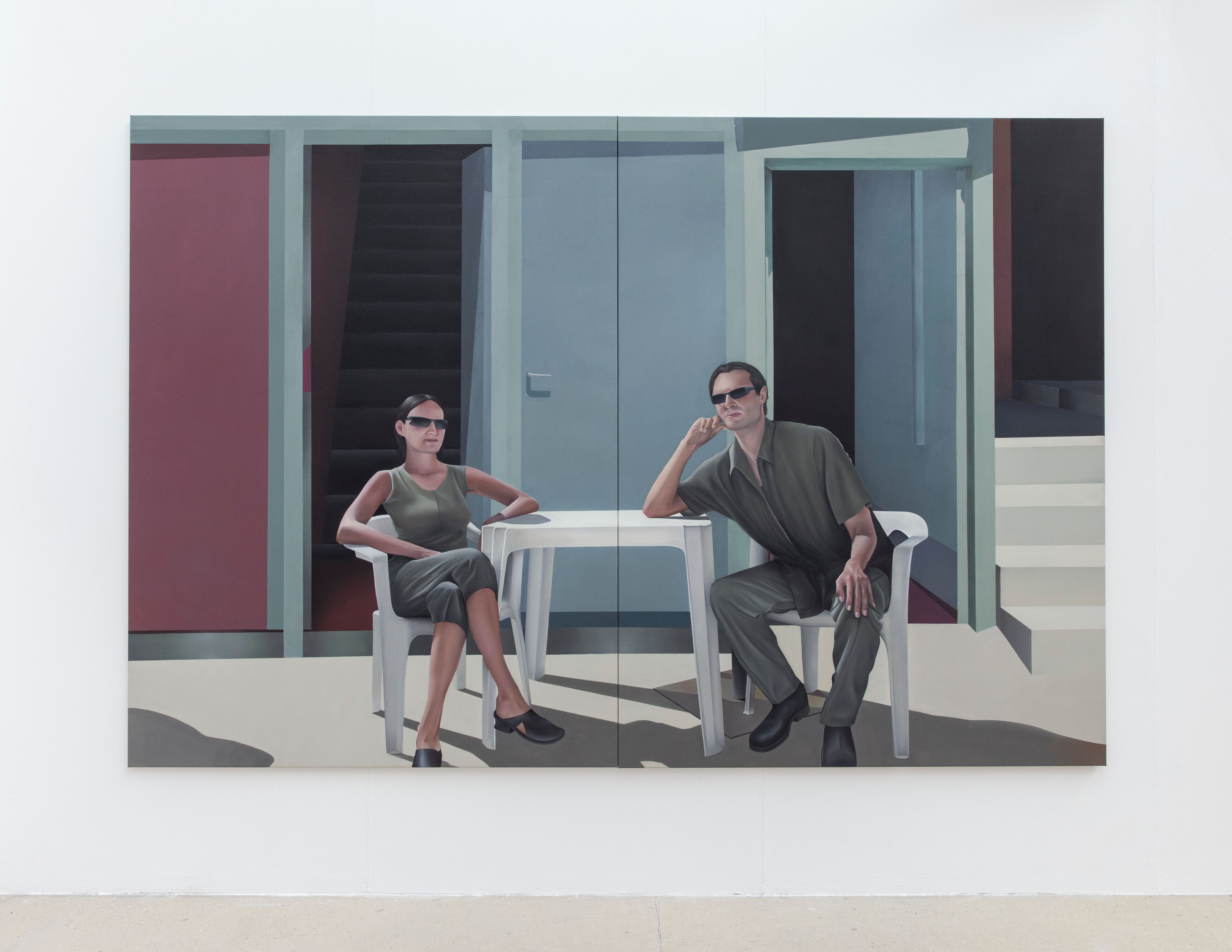
As with all group shows, there is a natural impulse with ‘Present Tense’ to scour the works for some common theme, to create a unified narrative about the concerns and preoccupations of artists working in the nation today. To do so, though, feels like a bit of a disservice, since what make the show exciting is the variety of the works on display and the singular way each artist engages with what is happening in the world around them.
If, however, there’s any common thread between the works on display, it’s that they are all interrogating the messy and often fallacious ways we relate to each other. If the questions ‘how do I understand you?’ and ‘how do you understand me?’ are being asked here, the answer from each of the 23 artists seems to be ‘not very well’.
But that hardly means the mood of ‘Present Tense’ is bleak; if anything, it’s optimistic. As Bornholt says, ‘the show is definitely hopeful. Things can be pretty bleak at the moment, especially for young people, but art has always had the ability to transcend the everyday and provide glimmers of hope.’
The future is hard to predict, but chances are, many of the names here will continue to make an impact on UK art. I ask Bornholt to fast-forward 50 years into the future and imagine what someone flipping through the ‘Present Tense’ catalogue might think. ‘I had a conversation with Clementine Keith-Roach recently about how only in hindsight can you fully comprehend the current “present”,’ she says. ‘I know all the artists in “Present Tense” are very much here to stay and will go on to achieve great things. I hope people look back on this show as an exciting moment, showcasing artists that I am sure will carry different and unexpected contexts in the future.’
'Present Tense' is on at Hauser & Wirth Somerset until 28 April 2024
